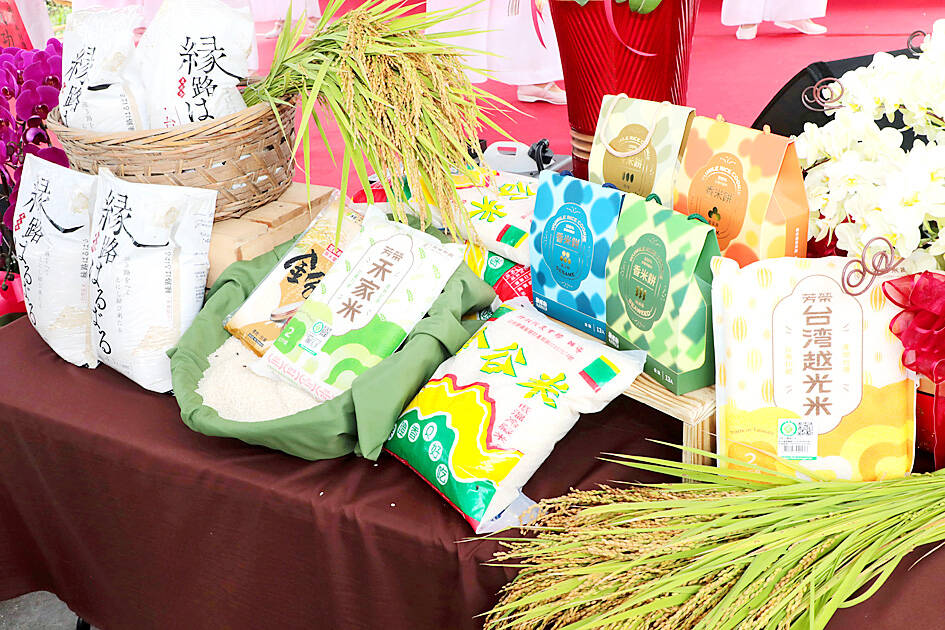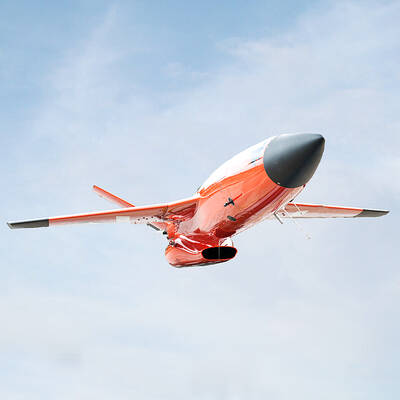Taiwanese rice exports to Japan reached 7,759 tonnes in the first five months of this year, a sixfold increase amid a 101.7 percent price surge in Japanese-grown rice compared with the same period last year, data from the Ministry of Agriculture showed.
As the price of domestic Japanese rice continues to rise due to shortages, many Japanese have turned to imported rice, boosting demand for Taiwanese-grown varieties.
Fang Rong Rice Factory, a century-old operation in Tainan’s Houbi District (後壁區), has also capitalized on this trend, exporting 500 tonnes of Tainan No. 11 milled rice earlier this month.

Photo courtesy of the Tainan City Government
Tainan Mayor Huang Wei-che (黃偉哲) on Friday said that many Southeast Asian countries have implemented protectionist policies on rice imports, and Japan previously had even stricter regulations in this area.
However, many Japanese rice suppliers have visited Taiwan to purchase rice due to the domestic shortage, Huang said.
Fang Rong’s milled rice was well-received by Japanese buyers for its high quality, having passed all pesticide and chemical residue tests.

Photo courtesy of the Tainan City Government
The rice exports to Japan not only enable Japanese consumers to eat delicious rice from Tainan, but also showcase the agricultural capabilities and potential of the county, he said.
The ministry has been committed to promoting Taiwan-grown rice in Japan, generating increasing interest among Japanese consumers.
The Japanese-language Nippon Television reported that Taiwan’s rice exports to Japan have surged, with Taiwanese rice competing with domestic varieties in texture and quality.
The report also cited ministry data showing that Taiwanese rice exports to Japan from January to last month reached 7,759 tonnes, a sixfold increase compared with the same period last year.
Additionally, several Japanese online influencers have shared videos documenting their experiences tasting Taiwanese rice, using it to create dishes tailored to Japanese tastes, such as cooked white rice with soy sauce or natto.
Some of them said that Taiwan-grown rice was “surprisingly tasty” and had a bouncy, chewy mouthfeel similar to Koshihikari — a Japanese rice variety — despite less sweetness and umami.
They said the Taiwanese rice tasted nearly identical to Japan-grown varieties when used in more heavily seasoned dishes, such as grilled meat rice, curry rice or beef bowls.
While Taiwan-grown rice tastes “different from usual” when used in traditional Japanese dishes such as cold rice balls or bentos, it is still a satisfying alternative given its price, they said.
A TV program on STV News also compared the taste and texture of Taiwan-grown rice to its Japanese counterparts.
The hosts and guests said that the rice from Taiwan had a similar appearance, aroma, sweetness and mouthfeel to locally grown rice.
The program said that Taiwan-grown rice suited local consumers’ taste, as it had been improved and tailored to Japanese’ preferences.
It also recommended purchasing Taiwan-grown rice, given its lower prices compared with local rice.

The US government has signed defense cooperation agreements with Japan and the Philippines to boost the deterrence capabilities of countries in the first island chain, a report by the National Security Bureau (NSB) showed. The main countries on the first island chain include the two nations and Taiwan. The bureau is to present the report at a meeting of the legislature’s Foreign Affairs and National Defense Committee tomorrow. The US military has deployed Typhon missile systems to Japan’s Yamaguchi Prefecture and Zambales province in the Philippines during their joint military exercises. It has also installed NMESIS anti-ship systems in Japan’s Okinawa

‘WIN-WIN’: The Philippines, and central and eastern European countries are important potential drone cooperation partners, Minister of Foreign Affairs Lin Chia-lung said Minister of Foreign Affairs Lin Chia-lung (林佳龍) in an interview published yesterday confirmed that there are joint ventures between Taiwan and Poland in the drone industry. Lin made the remark in an exclusive interview with the Chinese-language Liberty Times (the Taipei Times’ sister paper). The government-backed Taiwan Excellence Drone International Business Opportunities Alliance and the Polish Chamber of Unmanned Systems on Wednesday last week signed a memorandum of understanding in Poland to develop a “non-China” supply chain for drones and work together on key technologies. Asked if Taiwan prioritized Poland among central and eastern European countries in drone collaboration, Lin

The Chien Feng IV (勁蜂, Mighty Hornet) loitering munition is on track to enter flight tests next month in connection with potential adoption by Taiwanese and US armed forces, a government source said yesterday. The kamikaze drone, which boasts a range of 1,000km, debuted at the Taipei Aerospace and Defense Technology Exhibition in September, the official said on condition of anonymity. The Chungshan Institute of Science and Technology and US-based Kratos Defense jointly developed the platform by leveraging the engine and airframe of the latter’s MQM-178 Firejet target drone, they said. The uncrewed aerial vehicle is designed to utilize an artificial intelligence computer

Renewed border fighting between Thailand and Cambodia showed no signs of abating yesterday, leaving hundreds of thousands of displaced people in both countries living in strained conditions as more flooded into temporary shelters. Reporters on the Thai side of the border heard sounds of outgoing, indirect fire yesterday. About 400,000 people have been evacuated from affected areas in Thailand and about 700 schools closed while fighting was ongoing in four border provinces, said Thai Rear Admiral Surasant Kongsiri, a spokesman for the military. Cambodia evacuated more than 127,000 villagers and closed hundreds of schools, the Thai Ministry of Defense said. Thailand’s military announced that